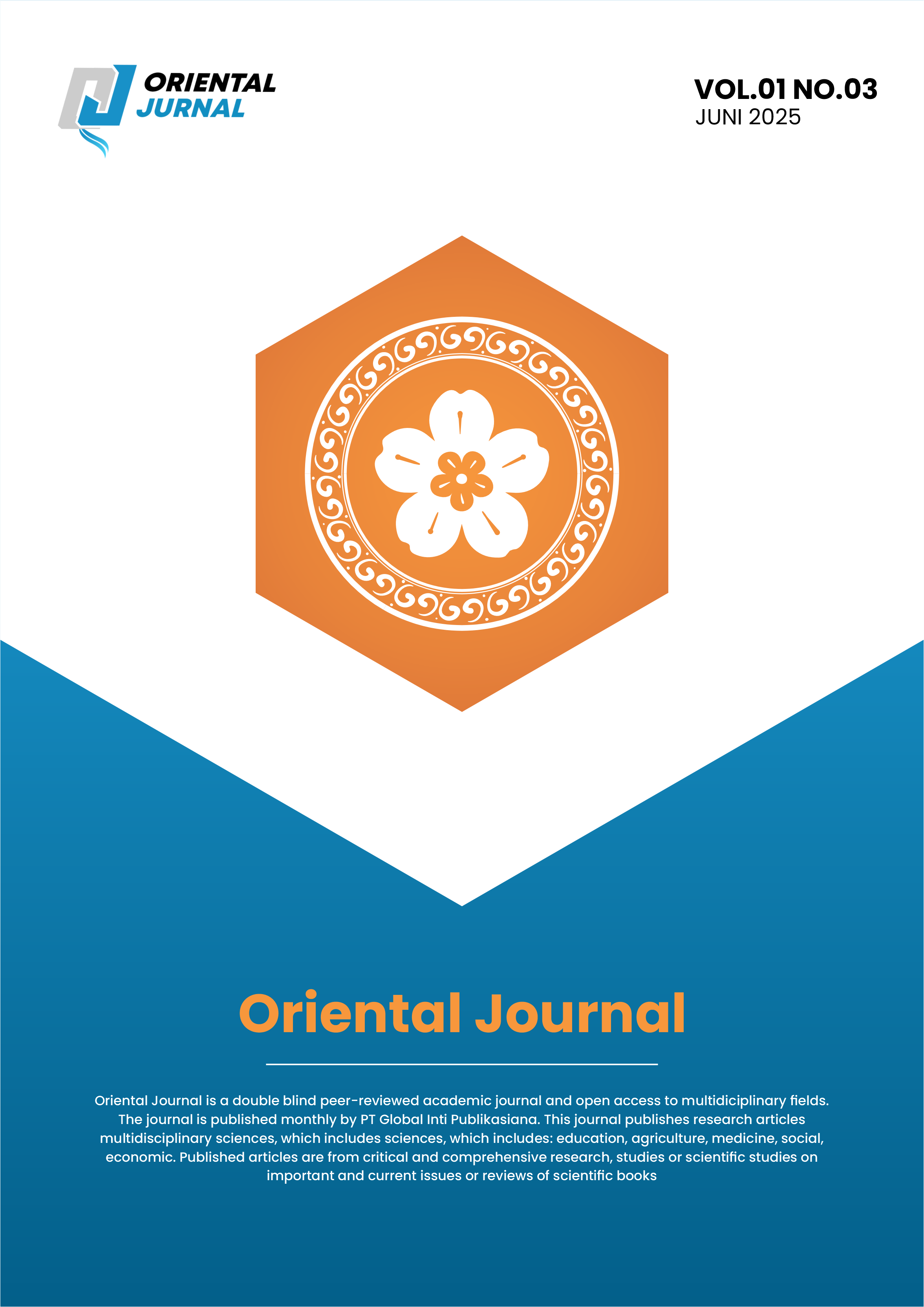Effect of Sorbitol and Starch Mass Addition on Bioplastic Quality
DOI:
https://doi.org/10.63347/oj.v1i3.21Keywords:
plastic, biodegradation, tapioca, sorbitolAbstract
In this modern human life, everyday life cannot be separated from the use of plastic. Starting from fulfilling primary needs such as food and beverage packaging to other tertiary needs. The use of plastic causes plastic waste to spread everywhere. Plastic waste generally comes from materials such as polyethylene (PE), polypropylene (PP) and polyvinylchloride (PVC) which cannot be broken down by microorganisms and are toxic to the body. This study aims to overcome conventional plastic waste which is increasingly polluting the environment and has an impact on health. Therefore, it is necessary to seek various methods of making plastics by utilizing polymeric materials because polymers are biodegradable and nontoxic. For this reason, researchers use natural polymer base material tapioca starch as a bioplastic and sorbitol as a plasticizer. There were 10 samples where the composition of tapioca starch consisted of 10 grams and 12 grams with a sorbitol ratio of 1 ml to 5 ml for each sample. The relationship between material variables can affect the results, this is determined by the most appropriate ingredient composition. From the results of this study, it has been proven that the water absorption test yielded 20% in sample 7, namely with a variation of ingredients between 12 kg of tapioca starch and 2 ml of sorbitol showing the best water absorption capacity compared to the other 9 samples, the degradation test yielded 26.5 %, and bioplastics grown in humus soil produced plastic films which degraded completely within 14 days. If the addition of sorbitol plasticizer is not in accordance with the composition of the starch compound needed, it will result in a bioplastic surface (morphology) that is not as desired.
Downloads
Published
How to Cite
Issue
Section
License
Copyright (c) 2025 Oriental Journal

This work is licensed under a Creative Commons Attribution-ShareAlike 4.0 International License.
This work is licensed under a Creative Commons Attribution-ShareAlike 4.0 International License.
Authors who publish with this journal agree to the following terms:
- Authors retain copyright and grant the journal right of first publication with the work simultaneously licensed under a Creative Commons Attribution-ShareAlike 4.0 International. that allows others to share the work with an acknowledgement of the work's authorship and initial publication in this journal.
- Authors are able to enter into separate, additional contractual arrangements for the non-exclusive distribution of the journal's published version of the work (e.g., post it to an institutional repository or publish it in a book), with an acknowledgement of its initial publication in this journal.
- Authors are permitted and encouraged to post their work online (e.g., in institutional repositories or on their website) prior to and during the submission process, as it can lead to productive exchanges, as well as earlier and greater citation of published work.







